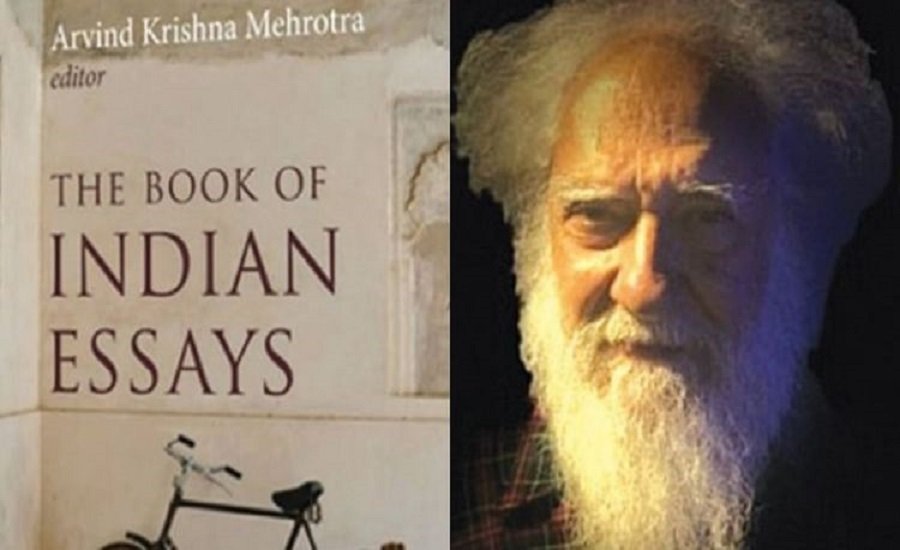Vishnu Makhijani
NEW DELHI — Its an anthology that took 10 years to compile but that’s not surprising given that it takes in 200 years of Indians writing prose and poetry in English and what emerges is a priceless collection of something that has never been attempted before.
“We started talking about the book, or one like it, about eight or ten years ago. But it was only an idea and it never got anywhere, mainly because I did not know where to begin or where to find the essays, especially of the 19th century,” its editor, poet-translator-anthologist Arvind Krishna Mehrotra, told IANS in an interview of “The Book of Indian Essays” (Black Kite)”.
“At first I thought of restricting the book to essays written since independence, then pushed it back to cover the 20th century, then decided to take in the whole period of writing in English in India, from around the 1820s to the present.
“We have never had a selection of essays for the general reader before and I thought that if we were going to do one we may as well include the 19th century, particularly since I knew at least two essays that I wanted to include the ones by (poet and assistant headmaster of Hindu College Calcutta Henry Louis Vivian) Derozio and (author-historian-poet), Shoshee Chunder Dutt.
“They would otherwise have remained buried in books that only a handful of specialists would ever read. Which is sad, for the essays, when they were written, were aimed at the magazine or newspaper reader of the time and not for the specialist of the future,” Mehrotra explained.
Given his vast research, does he see the writing in English evolving over the 200 years that the book covers?
“Unlike science, literature does not evolve. Unlike economies, it does not stagnate or grow. Something written let’s say in the 1870s, Shoshee Chunder’s ‘Street Music of Calcutta’ for example, might have been written yesterday in Delhi, if anyone in Delhi had the brains to listen to street cries and write an essay on the subject. The essay (or poem) is immersed in the moment, but it is a moment that’s been illuminated and which the passage of time cannot darken.
“Literature does not evolve but neither does it fade. Parts of it can of course be neglected and sink into obscurity. ‘The Book of Indian Essays’ is an attempt at rescuing a few pieces of prose before they disappeared altogether, though their sentences, had you stumbled upon them, would have lost none of their newness and surprise, as Derozio’s and Shoshee Chunder’s have not,” Mehrotra contended
He also noted that while Indians have been writing prose for 200 years, and yet when we think of literary prose we think only of the novel.
“The ‘essay’ brings only the school essay to mind. Those of us who read and write English in India might find it hard to name an essay even by someone like R.K. Narayan as easily as we would one of his novels, say ‘Swami and Friends’ or ‘The Guide’. Our inability to recall essays is largely due to the strange paradox that while the form itself remains invisible, it is everywhere present.
“The paradox becomes even more strange when we realise that some of our finest writers of English prose did not write novels at all, they wrote essays. The anthology is an attempt at making what has always been present also permanently visible,” Mehrotra explained.
To this end, the 45 essayists in the anthology include some of the best-known Indian writers of English, including Jawaharlal Nehru, Aubrey Menen, G.V. Desani, Dom Moraes, Sheila Dhar, Madhur Jaffrey, Amitav Ghosh, Anita Desai, Chitrita Banerji, Mukul Kesavan and Pankaj Mishra, to mention just a few.
Working as an alternative history, the anthology is impressive in its range, taking in the reflective essay, the luminous memoir, the essay disguised as a story, the memorable prefatory article, the newspaper column that transcends its humdrum origins, the gossip piece that oozes literariness, the forgotten flower in the long-dead magazine, the satirical putdown – all of them find a place.
This is Mehrotra’s 21st work. How does he find the time and energy for this?
“Time is something we are always short of but in this I was fortunate. I retired from my job the day it started. Since I started at a young age, at 21, I retired early. You could say that I have been retired all my well-paid working life. The job I had was teaching English at the University of Allahabad. It was as undemanding on my time as it was on my mind. The only way to keep the mind from rotting away and falling off and immersing it in Sangam was to write or translate or edit books,” Mehrotra concluded.
Power to those of his ilk! — IANS


